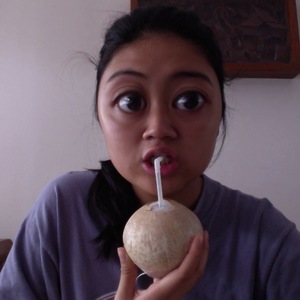If you’re one of those people who think that shallots are just oddly shaped onions, this article should (hopefully) fix that. Both shallots and onions fall under the ‘allium’ family of vegetables; bulbous, underground vegetables that originate from Central Asia. Nutrition-wise, the two contenders provide the same healthy medicinal properties that prevent cancer. So what exactly are the features that help us to differentiate between shallot vs onion?
Onions
How to spot one: Each onion grows as an individual bulb. They come with a smooth, papery skin that is peeled off to reveal multiple layers and rings. Their texture is crunchy when raw and crisp when cooked. The three most common types of onions are easily identifiable by their colours: yellow, red, and white.
What do they taste like?: Each of the three variations of onion has it’s own specific flavour profile yet retains the zingy, sulphuric fragrance that is common to all onions. Some people may find the taste of onion raw and by itself to be too pungent and overpowering. This can easily be fixed by simply sautéing the onions.
Shallots
How to spot one: People often get confused between shallot vs onion simply because the former looks like an elongated onion. The feature that sets shallots apart from onions is the fact that they grow in clusters on a plant and reveal cloves rather than layers, when peeled. Their skin colour varies between golden brown, grey, and reddish hues whilst their flesh is usually off white with a gradient that is close to their skin colour.
What do they taste like?: Not only do shallots look like a cross between garlic and onion, they also taste like a mixture of garlic and onion. It carries a milder version of the flavour you get from onion as well as being more fragrant and sweet.
When should I use each of them?

Onions: Typically, onions are eaten in both fresh cooking and heated dishes. They can be served raw, crunchy, and cold in salads. In curries, they work as a thickening agent. They can even be pickled and served as a side dish or topping.
Shallots: Okay, it’s a sane choice to cook and heat up shallots for a dish, but I seriously recommend eating it raw or pickled to fully appreciate its flavour. You can totally toss up some chopped shallots into your salad, or use it to add an interesting crunch to your dips and spreads.
Can you use them interchangeably?

This leads me to the most important question in this shallot vs onion debate. Does it matter if we use a shallot in place of an onion, or vice versa? The fact of the matter is, though each of the two has it’s distinct flavour and works for different dishes in it’s own way, yes!
Shallots can be swapped out with onions in cooked dishes. So if you’re planning on turning chicken with shallots to chicken with onion, go ahead. Though there is a crucial ratio to keep in mind when performing this switcheroo; that is one small onion is equal to three small shallots. Also, be sure to chop the onions into smaller pieces so that they can better mimic the smaller sized shallots they’re replacing.
When it comes to dishes that ask for raw shallots however, raw onions may be too strong. Your best bet is to go for yellow onions, which are mellower in comparison to the sweetness of sweet onions and sharpness of red and white onions.
When it comes to using shallots in place of onions, anything goes. Just keep in mind that shallots don’t give off as strong a flavour as onions and might not give off the pungent flavour explosion certain recipes (that include onion) call for.



